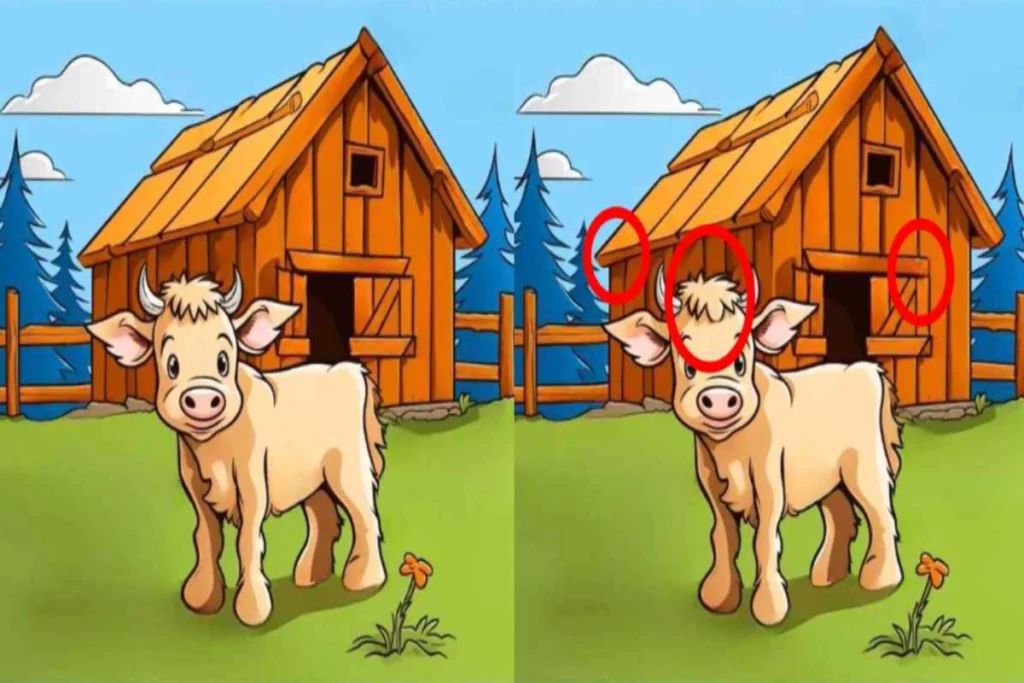Optical Illusion: The difference between perception and reality is one of the basic characteristics of optical illusions. People may see patterns or objects in an optical illusion differently than they actually do when they are in real life. Acknowledging and comprehending this perceptual disparity is difficult.
Here is the challenge
The picture that was shared above shows images of a farm cow. Readers have 7 seconds to identify the three differences that exist between the two images. This is the beginning of your time. Various visual cues and patterns are frequently used by optical illusions to produce misleading effects. Lines, shapes, colors, shading, and perspective are a few examples of these cues. Optical illusions can fool the brain into perceiving a visual stimulus in a specific way by adjusting these components.
Solution Here

It is frequently necessary to pay close attention to details and observe subtle visual cues in order to detect optical illusions. Through dissecting an image or pattern, people can discover hidden tricks and understand the complex mechanisms that create them. Identifying differences Perceptual awareness, cognitive processing, and experimental curiosity are all necessary for solving optical illusions. If you can’t able to find the differences, then check above.


